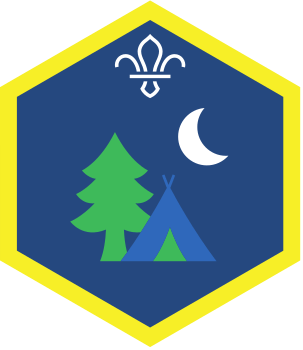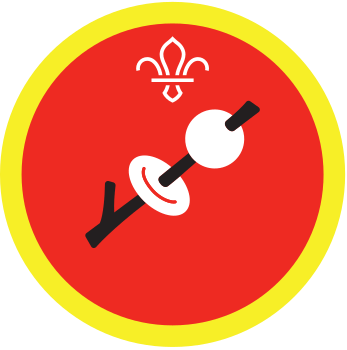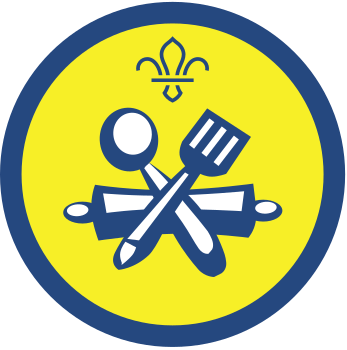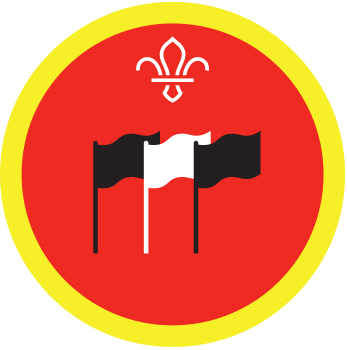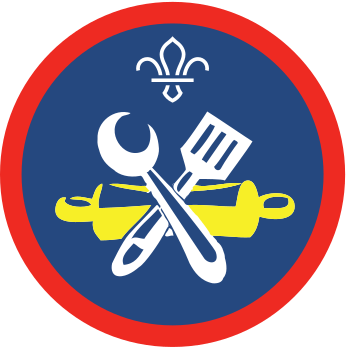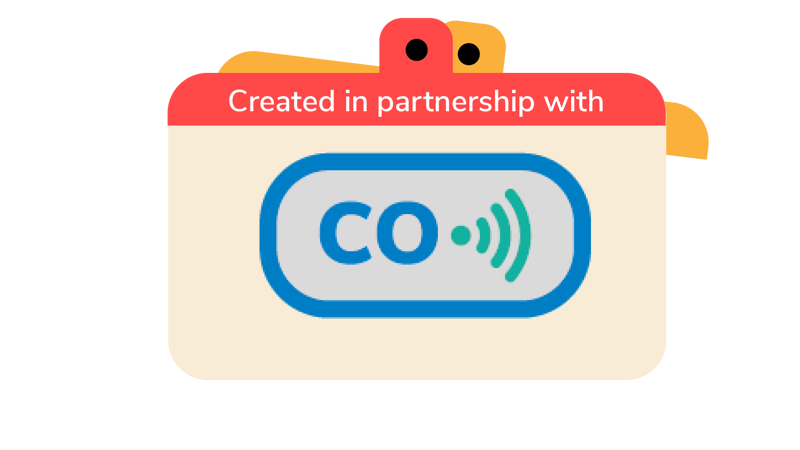
Moroccan veggie stew
You’ll need
- Chopping boards
- Knives
- Wooden spoons
- Bowls
- Access to water
- Ingredients (see recipe card)
- Dutch oven (or equivalent fireproof casserole dish with lid)
- Hot embers and coals
- Can opener
- Vegetable peeler
- Garlic press or alternative
- Ladle
- Cutlery
- Heatproof gloves or similar protective equipment
- Bucket of sand and/or water
- First aid kit for burns
- Carbon monoxide alarm
Before you begin
- Use the safety checklist to help you plan and risk assess your activity. Additional help to carry out your risk assessment, including examples can be found here. Don’t forget to make sure all young people and adults involved in the activity know how to take part safely.
- Make sure you’ll have enough adult helpers. You may need some parents and carers to help if you’re short on helpers.
Getting ready to run this activity
- This recipe is designed to be cooked in a Dutch Oven.
- Remember to have heatproof gloves, a bucket of water or sand, and first aid kit for burns available. as the entire surface area of the Dutch oven will be extremely hot.
Building a fire and preparing to cook on a campfire
- Build and light a fire before starting this activity. Our activities, Campfire admirers or Construct a campfire, can help you to do this. You’ll use the hot embers to cook on, so the fire will need enough time to die down before cooking.
- You could run our fire safety activities, Fuel air ignition and Sitting safely by a campfire, prior to running this session.
- Remember to have a hand washing station and take extra hygiene precautions when handling raw meat, such as regular hand washing, having separate equipment for raw and cooked meat, and washing up equipment as soon as it's been used. Take a look at our guidance on food preparation.
- Make sure you have all the ingredients ready.
- Remember to check your ingredients against any allergy or dietary requirements to ensure everyone can enjoy the recipe. This may mean using alternative ingredients.
Having a safe cooking source
- Make sure that everyone’s fires have been built outdoors in clear, open areas, with plenty of ventilation, and away from any areas where people will be sleeping.
- All the fires need to burn down to hot embers before they can start cooking. This increases the chance of the fuel burning without enough oxygen present, increasing the risk of carbon monoxide exposure. We’ve more guidance on different cooking methods.
- If using a gas stove, make sure it’s on a stable heatproof surface and in a clear and open area, with plenty of ventilation.
Consider using this script to teach young people about carbon monoxide and how to keep themselves safe when burning fuel.
Does anyone know the three things we need to ignite or sustain a fire?
We need oxygen, a heat source (this can be a match, lighter, electricity or flint and steel) and fuel (this can be wood, gas, or solid fuel). This is known as the fire, or combustion triangle. When these three things come together, a chemical reaction happens and that is how we get fire.
What would happen if we removed the heat source from this triangle?
With just oxygen and fuel, nothing would happen.
What would happen if we removed the fuel from this triangle?
With just oxygen and a heat source, nothing would happen.
What would happen if we removed the oxygen from this triangle?
When there is not enough oxygen available for the fuel to burn fully when introduced to a heat source, carbon monoxide is released.
Does anyone know what carbon monoxide looks like?
It is actually colourless, odourless and tasteless – so we can’t sense it at all.
How do you know if you, or someone else might have carbon monoxide poisoning?
The symptoms of carbon monoxide poisoning might be confused with ‘flu-like’ symptoms. This could be headaches, dizziness, feeling weak, vomiting, chest pain, and confusion.
Safe or unsafe?
Gather everyone together and explain that you will be reading out statements. It is up to your young people to decide if the statements are safe or unsafe. They can do this by a show of hands, or marking areas on the floor for people to stand in. Make sure you play this away from any fires, in a safe area.
I’m going to cook for my troop. It’s raining so I’m going to cook in a gazebo with the sides removed for ventilation.
SAFE – Cooking in an environment where there is plenty of oxygen is vital to making sure no carbon monoxide is released.
We have a carbon monoxide alarm, so we don’t need to worry about the risk of being poisoned.
UNSAFE - A Carbon Monoxide alarm detects the presence of the gas in the air, however should be used as an extra precaution in addition to making sure you are cooking in a well ventilated area.
Moroccan veggie stew recipe
Ingredients:
- Cooking oil
- 1 onion (peeled and sliced)
- 2 garlic cloves (peeled and crushed)
- 2 sweet potatoes (peeled and diced)
- 1 red pepper (sliced)
- 2 cans of chopped tomatoes
- 2 tsp of spices*
- 2 ½ pints of vegetable stock
- 2 handfuls of dried fruit, such as apricots or raisins
- Couscous, rice or bread to serve
*You could see if you can find a Moroccan spice mix called Ras El Hanout, or make your own spice mix. A great mix is chilli flakes, ground ginger, cinnamon and turmeric.
Prep time: 10 – 15 minutes
Cook time: 30 – 40 minutes
Serves: 4
- An adult should always be assigned to and supervising each group during this activity.
- Clean and prepare your ingredients. Make sure your sweet potato pieces are small, as they’ll take the longest to cook. Aim for them to be about half an inch or roughly 1.5 cm.
- Add a little cooking oil in your Dutch oven and allow it to heat up.
- When the oil’s heated, fry your onion and garlic, until they’re softened. Make sure you give it a stir, so they don’t stick to the pan. Add a little more cooking oil if needed.
- Add your sweet potato, red pepper, chopped tomatoes and spices. Give everything a good stir to mix everything together.
- Let the ingredients cook for about 5 minutes. You can use this waiting time to prepare your stock if needed.
- After 5 minutes, add your stock and dried fruit to the Dutch Oven and stir.
- Cover the Dutch oven with its lid, and simmer for 20 minutes. Check and stir occasionally, to make sure it doesn’t stick to the bottom. You can add a little water if the stew looks too dry. You could use this time to prepare a side too, such as couscous, rice or bread.
- After twenty minutes, an adult volunteer should carefully remove the Dutch Oven or pan from the heat, while wearing the heatproof gloves. They should then place it down on a heatproof surface (away from young people), carefully remove the lid and use a fork to check that the sweet potato has cooked nicely. If the fork goes into the potato with ease, it’s ready.
- Put the Dutch Oven on a heatproof surface, away from young people, and let it cool down slightly.
- When ready, an adult should use ladle to serve it over couscous or rice. You can allow a bit of time for it to cool slightly before you tuck in.
About Morocco:
- Morocco’s a country in North Africa, which is nearly twice the size of the UK.
- It’s officially called the Kingdom of Morocco.
- Morocco has coastlines on both the Atlantic Ocean and the Mediterranean Sea.
- Languages spoken in Morocco include Arabic, Berber (Amazigh), and French.
- If you visit Morocco, you might see an unusual sight of goats in trees! They’re commonly found in the Argan trees there.
About Moroccan food and culture
- Traditionally, Moroccan food uses a lot of aromatic spices, but these tend to give lots of flavour, rather than making it spicy.
- There’s a special mix of spices called Ras El Hanout, which are often used in Morocco and other places in North Africa.
- Dried fruits, such as apricots, are often used in Moroccan recipes to add a sweet flavour or taste.
- Locals may buy their spices and dried fruits from local markets.
- The recipe in this activity is based on a tagine. The word tagine, sometimes spelled tajine, is the name for both a traditional slow-cooked Moroccan stew and the type of clay pot it’s usually cooked in. There are lots of different types of tagines, including both vegetarian and meat-based versions.
- Sometimes dinners in Morocco start with a range of different cold and hot salads.
- Couscous is a popular grain used in main dishes.
- A popular drink is Atai, a Moroccan tea, which is made with green tea, mint leaves and sugar.
- Atai is also the name for the traditional process of making and serving the tea.
- In Moroccan culture, if you’re offered food or tea, it can be considered rude to turn it down.
Reflection
This activity was an opportunity to spend some time in the great outdoors, while working together to create a meal to share. How did it feel to cook outdoors and on a fire? How is it different to using modern methods? Did you work well together and how did you promote teamwork?
Everyone needed to be responsible and safe around the fire. There are lots of risks and hazards that we must be mindful of when enjoying our fire and using it for cooking. Can anyone spot the different ways we have tried to keep everyone safe?
Has anyone heard of carbon monoxide? What have we done today to make sure we don't suffer from carbon monoxide exposure?
This activity was also a chance to explore international foods. Has anyone tried Moroccan food before? How did it taste? How does it compare to other foods you’ve tried? Would you eat it again? Are you glad you tried it?
Keeping an open mind towards new flavours, cultures and experiences can help people to find brand new, amazing things.
Safety
All activities must be safely managed. You must complete a thorough risk assessment and take appropriate steps to reduce risk. Use the safety checklist to help you plan and risk assess your activity. Always get approval for the activity, and have suitable supervision and an InTouch process.
- Cooking
Teach young people how to use cooking equipment safely. Supervise them appropriately throughout. Make sure it’s safe to use and follow manufacturers’ guidelines for use.
- Fires and stoves
Make sure anyone using fires and stoves is doing so safely. Check that the equipment and area are suitable and have plenty of ventilation. Follow the gas safety guidance. Have a safe way to extinguish the fire in an emergency.
- Food
Remember to check for allergies, eating problems, fasting or dietary requirements and adjust the recipe as needed. Make sure you’ve suitable areas for storing and preparing food and avoid cross contamination of different foods. Take a look at our guidance on food safety and hygiene.
- Flammable items
Always take care when using flammable items, especially if you’re near fire. Always follow the manufacturer’s instructions and guidelines.
- Visits away from your meeting place
Complete a thorough risk assessment and include hazards, such as roads, woodland, plants, animals, and bodies of water (for example, rivers, ponds, lakes, and seas). You’ll probably need more adult helpers than usual. Your risk assessment should include how many adults you need. The young people to adult ratios are a minimum requirement. When you do your risk assessment, you might decide that you need more adults than the ratio specifies. Think about extra equipment that you may need to take with you, such as high visibility clothing, a first aid kit, water, and waterproofs. Throughout the activity, watch out for changes in the weather and do regular headcounts.
To decrease the level of the challenge, you may want to build the fires for your young people in advance.
You could peel and chop the ingredients before the session, or have the group involved in all stages of the process.
There are lots of different jobs that need doing when planning, making and cooking on a campfire. There’s a role for everyone, so encourage everyone to be involved in a way that works for them.
If anyone finds chopping things more difficult, think about pairing them up with another young person, young leader or adult to help them. They might also be able to do another task, such as stirring or washing up.
Remember to check your ingredients against any allergy or dietary requirements to ensure everyone can enjoy the dish. This recipe can easily be adapted.
Don’t forget to check the type of stock you’re using, as this can contain allergens. Remember to check any side dishes you’re having, too. For example, did you know that couscous contains gluten?
All Scout activities should be inclusive and accessible.
If you enjoyed this activity, you could try making some more recipes or using different cooking methods. We’ve lots more recipes to inspire you.
Everyone was reminded of the dangers of carbon monoxide poisoning at the start of this activity. Consider combining this with some other activities on carbon monoxide safety.
Young people could adapt the recipe, adding or replacing ingredients, and deciding how they’re going to work together to make the meal.
Make sure your young people are given appropriate space to learn how to cook using a Dutch oven.
